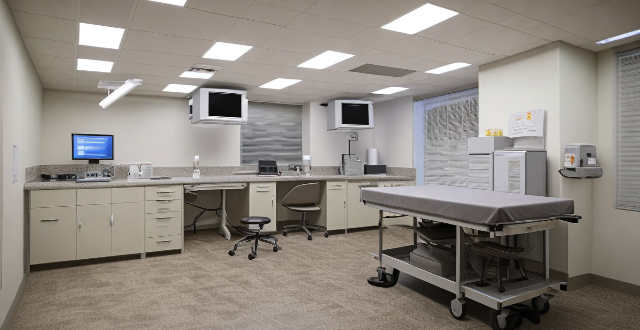Sports rehabilitation centers employ a range of equipment to aid athletes in injury recovery and performance enhancement, including therapeutic modalities like hot/cold packs, ultrasound, electrical stimulation, and laser therapy. Manual therapy tools such as foam rollers, massage tables, spinal traction tables, resistance bands, and weights are used. Rehabilitation machines include treadmills, exercise bikes, ellipticals, and rowing machines. Assessment tools encompass gait analysis systems, force plates, range of motion devices, and strength testing equipment. The variety of equipment is chosen based on the individual needs of the injured athlete, the type of injury, and the phase of recovery.

Equipment Used in Sports Rehabilitation Centers
Sports rehabilitation centers use a variety of equipment to help athletes recover from injuries and improve their physical performance. Some of the most common types of equipment used in sports rehabilitation treatments include:
Therapeutic Modalities
- Hot and Cold Packs: These are used to reduce pain, swelling, and inflammation. Hot packs increase blood flow to the affected area, while cold packs decrease it.
- Ultrasound: This device uses high-frequency sound waves to promote healing by increasing blood flow and reducing muscle spasms.
- Electrical Stimulation: Devices that deliver electrical impulses to the body can be used for pain relief, muscle strengthening, or stimulation of nerve function.
- Laser Therapy: Low-level laser therapy can help reduce pain and inflammation, as well as promote tissue repair.
Manual Therapy Tools
- Foam Rollers: These cylindrical foam pads are used for self-massage to release muscle tension and improve flexibility.
- Massage Tables: These adjustable tables allow therapists to perform hands-on treatments such as massage, joint mobilization, and soft tissue manipulation.
- Spinal Traction Tables: These specialized tables apply gentle traction to the spine, helping to decompress intervertebral discs and relieve pressure on spinal nerves.
- Resistance Bands and Weights: These tools are used for strength training and rehabilitation exercises aimed at improving stability, balance, and overall functional capacity.
Rehabilitation Machines
- Treadmills: Walking or running on a treadmill can be part of a rehabilitation program, especially when combined with other modalities like resistance bands or weights.
- Exercise Bikes: Stationary cycling is often incorporated into rehab programs to maintain cardiovascular fitness and strengthen lower extremity muscles without putting too much stress on injured areas.
- Elliptical Machines: These provide a low-impact cardiovascular workout that can be beneficial for athletes recovering from certain injuries.
- Rowing Machines: Rowing machines offer a full-body workout that can help improve endurance and strength while being easy on the joints.
Assessment Tools
- Gait Analysis Systems: High-tech cameras and sensors capture how an athlete moves, allowing therapists to identify abnormalities and plan appropriate interventions.
- Force Plates: These measure forces exerted by the body during movement, providing valuable data for assessing balance, coordination, and musculoskeletal health.
- Range of Motion Devices: Goniometers and inclinometers are used to measure joint angles and evaluate flexibility and mobility limitations.
- Strength Testing Equipment: Handheld dynamometers and isokinetic machines assess muscle strength, which is crucial for determining an athlete's readiness to return to sport.
In conclusion, sports rehabilitation centers utilize a diverse array of equipment tailored to address specific needs of injured athletes. The selection of equipment depends on the nature of the injury, the stage of recovery, and the individual goals of each patient.